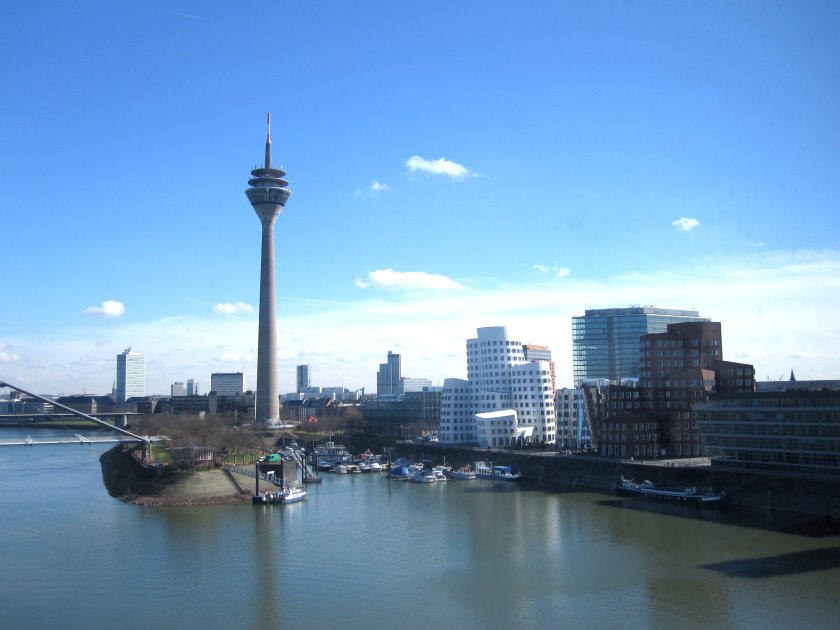 Modernism The Media Harbour area boasts an aquatic-inspired skyline, including several Frank Gehry-designed buildings
Modernism The Media Harbour area boasts an aquatic-inspired skyline, including several Frank Gehry-designed buildings
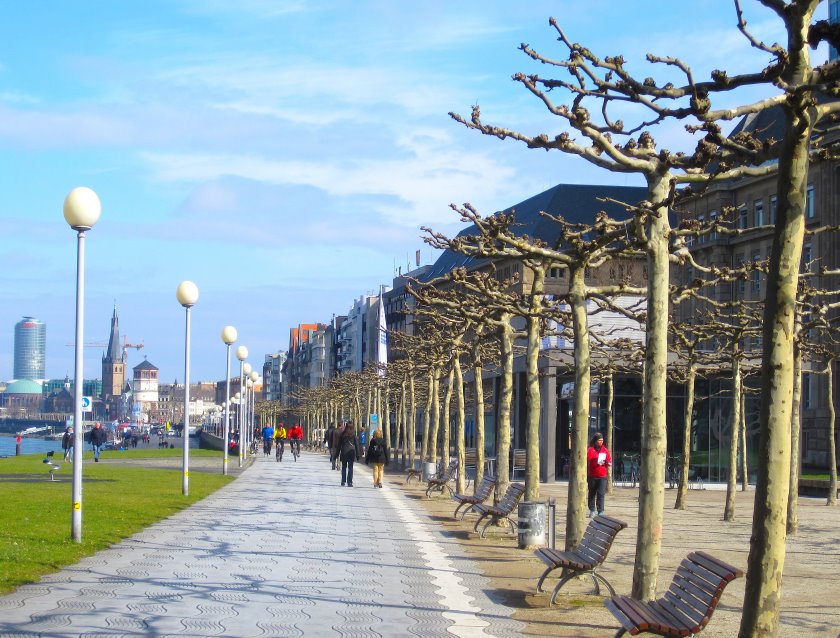 Experiencing Düsseldorf Once the weather clears, the German city is very walkable
Experiencing Düsseldorf Once the weather clears, the German city is very walkable
Elyse Glickman is US west coast editor of Lucire.
Links
Air Berlin
Düsseldorf Tourism
While Düsseldorf, Frankfurt and Berlin each have unique personalities and rich histories that would take weeks to fully digest, 72 hours in each place provide a hearty sampling of what makes the German lifestyle one of the most progressive, reports Elyse Glickman. In part one of a three-part feature, we check out Düsseldorf
photographed by the author
In our parents’ and grandparents’ generations, Germany not only carried political baggage over from World War II, but also two distinct societies—the progressive ‘West’ and the austere ‘East’ under communist rule. However, mention ‘Germany’ today and positive things come to mind—engineering, innovation, cutting-edge fashion, functionally chic home design, and one of the world’s highest standards of living. With Frankfurt considered the economic heart of Europe, Düsseldorf a fashion and high-tech hub, and Berlin as a centre of art and culture, there’s something for every weekend adventurer.
With good planning, one can get a hearty taste of the good life, German style, as its small and large cities are packed with museums, expansive parks, alluring shopping streets and boulevards and restaurants ranging from informal, old school Bräuhauser to sophisticated restaurants rethinking traditional recipes. Even with the euro still riding high over the US dollar, the temptation to shop is strong, and the preponderance of vintage shops and flea markets ensures people on all kinds of budgets will find something special. The same holds true for museums, whether your thing is contemporary art, classical art, history or architecture.
Although Lufthansa historically has been a reliable, pleasant way to get to and from Germany (and other European cities), Air Berlin has cleverly carved out its place in the skies in its 25 years in business. While it offers foreign travellers easy entry points into Germany through Düsseldorf and Berlin’s pocket-sized Tegel Airport, it has also gained popularity through value-oriented air fares as well as an in-flight experience that is decidedly youthful and unpretentious in the economy section.
While Air Berlin’s business class has a contemporary vibe along similar lines to Virgin Atlantic, it also slyly promotes Sylt, a popular vacation island spot that resembles a German Martha’s Vineyard. The menu in business class as well as a menu of “for sale” items in economy are furnished by Sansibar, a popular luxury resort known for its cuisine as well as its beach-casual lifestyle. In a similar fashion to Wolfgang Puck, Chef Herbert Seckler’s celebrity status has transcended into a lifestyle brand that includes clothing, jewellery, spices, condiments and kitchen items.
Retracing Ingeborg’s footsteps
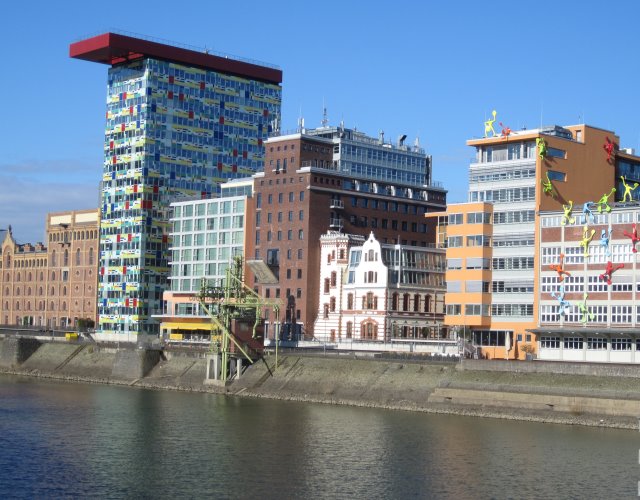
Back in the ’80s, when I was at Saks Fifth Avenue’s Skokie, Ill. store, I worked with a distinguished in-store runway model from Düsseldorf who told me that her hometown was the ‘Paris’ of the Rhine. Although Berlin has taken hold as a fashion and arts’ hub in the years since the fall of the Berlin Wall, there’s a lot about Düsseldorf that reminded me of Paris—its grand boulevard, arty coffee houses and museums. No wonder Ingeborg often waxed poetic about her beloved Düsseldorf, even with a successful fashion career in Chicago.
Arriving in the middle of the afternoon, I start my weekend as Ingeborg probably would, on the Königsallee (or, ‘Die Kö’, as locals call it), which I agree does have a Champs-Élysées vibe to it. It is posh and attractively lined with many of the same familiar European labels found on flashy retail boulevards from the Champs-Élysées and Rodeo Drive to Singapore’s Orchard Road. However, the street’s line-up also includes top German brands and popular high-street stores.
Galleria Kaufhaus Königsallee anchors the Kö. While the department store chain extends throughout Germany, the branch’s nicely organized first floor accessories’ section is a good place to familiarize oneself with German labels and other brands from all over northern Europe. Its gourmet floor, meanwhile, is also a fine place for people watching and a quick snack.
The side streets and neighbourhoods outside the city centre hold some of the nicest surprises. My hotel, the Hyatt Regency Düsseldorf, is not your mother’s Hyatt, or your older sister’s for that matter. Hip, elegant, refined, with exceptional views, just far enough away from the tourist quarter so you will be prompted to walk the trails by the waterfront or explore the quieter residential sections. It sits on a peninsula situated in the Media Harbour area, noted for its modern, aquatic-inspired skyline (including several Frank Gehry-designed buildings).
continued below
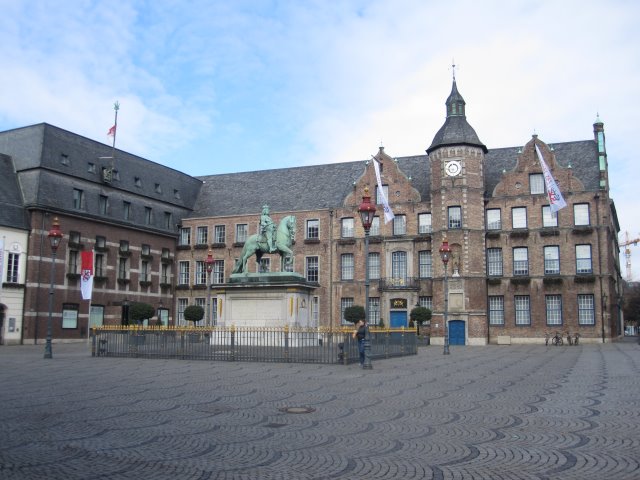
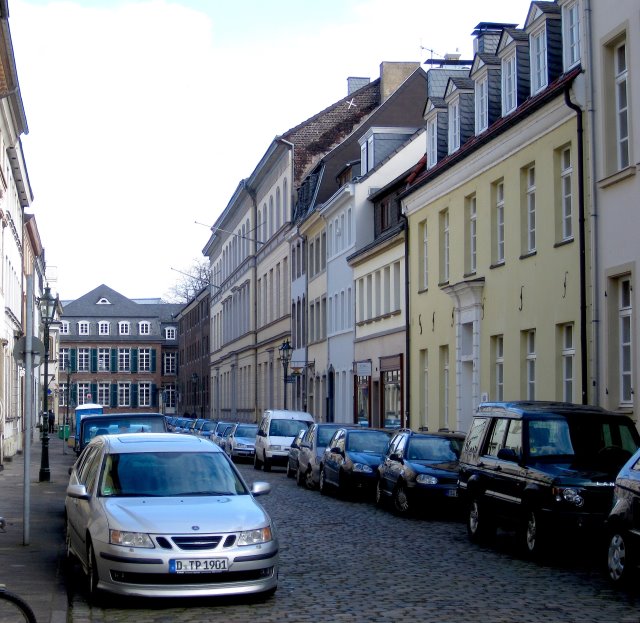
Top and above Altstadt and Carlzplatz.
For my first breakfast, I meet up with my guide, Katja Stüben, at her favourite location of Woyton near Media Harbour to plan out the day. Over a perfect latte, she tells me the home-grown Düsseldorf coffee chain is known for its lunchtime sandwich and salad selection using items sourced from local farms whenever possible. After a jog down the waterfront, past the city’s landmark Television Tower and the Kunst im Tunnel (KIT) museum, we spend some time lingering along the exquisite 18th-century expanse or Carlstadt and its Sunday flea market. The stand-out vendor is Karin Scholz, who handcrafts elegant statement pieces with jet-black beads, leather and wood. While her pieces are significantly more expensive than other vintage and new pieces sold in the market, they make a tempting souvenir for serious collectors who chronicle their journeys through unique pieces.
While Altstadt is undoubtedly touristy, especially among beer aficionados, there are charming fashion boutiques to be found as well as essential foodie stops (Düsseldorf Senfladen for mustard; Hinkel for pretzels). The epicentre of this section is Bolkerstraße, which at night becomes one of Germany’s longest beer gardens outside München. By day, thanks to its maze of streets lined with historic buildings and shops, it is almost as busy as the night-time hours, but with a greater concentration of older diners and families.
Though Stüben notes the brunch spot she’s chosen (Zum Schiffchen) is the kind of place she’d be more likely to visit with older relatives (she and her husband recommend arty Monkey's, with sections dedicated to “modern” German, Mediterranean and Asian cuisines), she has her favourite items. Their herring appetizer is as wonderfully flavourful as it is light, providing a nice counterpart to hearty-yet-nuanced fare prepared by chef Rolf Zabel. For a fun casual dinner in an arty, modern setting, she suggests the aptly-named Curry, which does only two things, but does them brilliantly: currywurst, the “it” fast street food of the moment, and perfectly executed fries.
For travellers with more time to explore, the top choice for vintage shopping is the Trödelmarkt on the north end of town, featuring dozens of professional and amateur traders and large tent with café and live music. Bilk, meanwhile, is the “college town” neighbourhood, with its own cache of little stores and second-hand bookshops.
The best of the city’s 26 museums can either be found in the heart of Altstadt or in the neighbouring parklands accessible by a 20-minute walk or five-minute tram ride from the city centre. These include the Museum Kunstpalast, the Kunstsammlung Nordrhein-Westfalen complex and the NRW-Forum (North Rhine–Westphalia Forum for Culture and Business, which recently staged an exhibit of Bryan Adams’ photography), the Hetjens-Museum (ceramics) and the Filmmuseum.
On my final night in Düsseldorf, I get a taste of “modern” Rhineland cuisine at Dox in the Hyatt. How does executive chef Felix Petrucco define what makes his German cuisine suited for the 21st century? ‘We make traditional dishes, but in a very light and modern way,’ he explains, his signature salmon appetizer indicative of this. ‘I am inspired by what the customer wants to experience, and I find myself wanting to cook for the ways my tastes have changed, especially as we do get a lot of local customers here.’
Ingeborg would approve. •

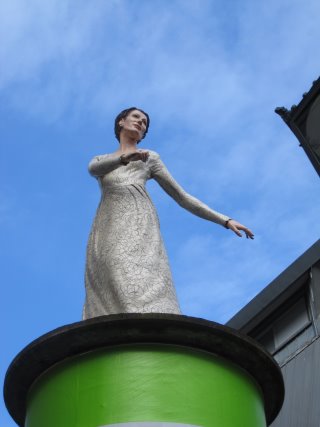
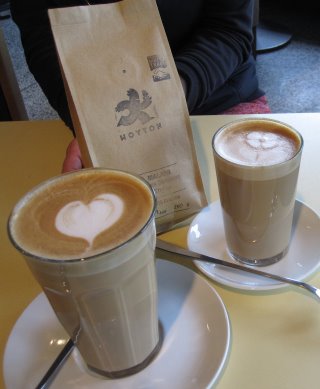
Top Dining at the Dox inside the Hyatt Regency. Above left A statue for brides. Above right Coffees at Woyton.
Related articles hand-picked by our editors
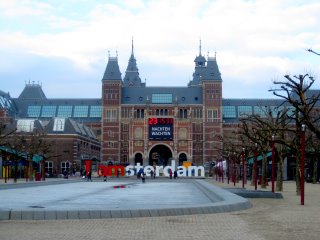 What’s new in the old town of Amsterdam
What’s new in the old town of Amsterdam
As the van Gogh Museum and Rijksmuseum reopen after years of renovation, Elyse Glickman reports Amsterdam lives up to its reputation as one of Europe’s most artistically exciting cities in other ways
photographed by the author
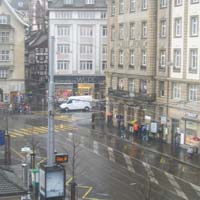 Basel dazzle
Basel dazzle
Though best known as an international meeting place for business executives,
there is a fun to be had and elegance to be savoured in this sophisticated “border town” by Elyse Glickman
photographed by the author
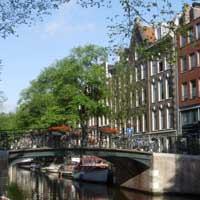 Dutch on the fly
Dutch on the fly
You cannot go around the world in a day, but you can get a taste of it
with a stopover in Amsterdam by Elyse Glickman
photographed by the author
Expanded from issue
23 of Lucire
Advertisement
Copyright ©1997–2022 by JY&A Media, part of Jack Yan & Associates. All rights reserved. JY&A terms and conditions and privacy policy apply to viewing this site. All prices in US dollars except where indicated. Contact us here.